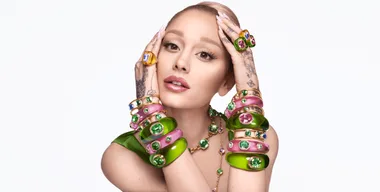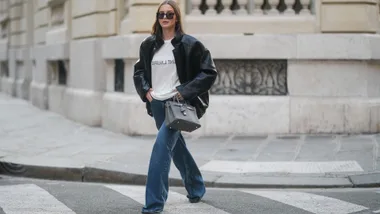Zillennials (on the cusp of Gen Z and Millennials) are taking to the internet to argue that TikTok’s latest ‘legging legs’ trend is one of the scariest viral trends since the dark ages of the late 90s and early 2000s.
For those unaware, teenagers have been posting photos of their legs (with ‘thigh gaps’) to TikTok and saying they have the ‘perfect legs for leggings’. As if there is such a thing as an unperfect leg for leggings…
It’s not just leggings. We’ve also seen ‘tank top arms’ become a thing, and it is terrifying.
See some examples here:
We don’t call the early 2000s the ‘dark ages’ lightly. While ‘heroin chic’ (where you hope to look as thin and emaciated as someone abusing Class A drugs) is heralded as a late 90s trend, Kate Moss didn’t utter her “nothing tastes as good as skinny feels” quote until 2009.
Zillennials were around 14 or 15 at that time and remember all too well being at an impressionable age where the body is still maturing and changing. They remember every second of how hard it was to deal with constant ‘thigh gap’ and ‘fitspo’ content.
It was so bad that in the 2010s countless women banded together to decry such body image standards, and to embrace ‘body positivity’, a movement where all women were encouraged to celebrate their body shape, no matter the size. Then came ‘body neutrality’, where size was eliminated from the discussion as simply ‘irrelevant’.
Innumerable body confidence crusaders did interviews and posted online about their battle to improve female body image and remind us that we are so much more than the vessel we stand in.
The big question: how did we get back here?
Why are the next generation repeating the mistakes of the one gone before them, especially when women have worked so hard to break those old standards?
If you feel exasperated, you’re not alone.
What Is ‘Legging Legs’?
‘Legging legs’ is a viral TikTok trend where women with gaps between their thighs are posting to TikTok wearing leggings and saying that the shape of their leg is the best to suit wearing a legging.
It not-so-subtly suggests the falsehood that thighs that do not have a gap between them are not worthy of being in a legging (it is truly as degrading and wrong as it sounds).
Why Are ‘Legging Legs’ And ‘Thigh Gaps’ Still Being Talked About?
Expert therapist and author of The Curious Life Jana Firestone says that the rebirth of hurtful trends like this are due to a resurgence in old ‘norms’.
“When trends like this arise, much like the thigh-gaps of years ago or the overfilled Instagram face, it is directly influencing societal norms, which in this case is setting unrealistic and dangerous expectations for young women, as well as making a statement more broadly to all genders about what women’s bodies “should” look like,” she explains.
Often, this idea of what we “should” look like is based on celebrities, fashion and people of influence.
A prime example of this is the decrease in plus-size models walking fashion week runways, with Glamour reporting that many shows featured significantly less in 2023 than they had in 2022.
As they say, “if you can’t see it, you can’t be it”, and if we’re constantly bombarded with curated TikTok feeds of stereotypical body types, they end up being the only ones we celebrate.
The ‘legging legs’ trend tells older generations that while they have worked hard to change society’s codes and values around women’s bodies, perhaps those expectations were never truly stamped out.
Why Is ‘Leggings Legs’ So Damaging?
According to Firestone, women are markedly susceptible to body discourse online.
“For young women in particular, the belief that they “should” have a particular body shape because that’s what is trending on social media, can be incredibly damaging to self-esteem, confidence, body image and mental health,” she says.
“The pendulum seems to be swinging back to women’s bodies being used as a measure of beauty and success, and this takes the focus off intelligence, contributions or achievements of any other kind.
“There is real potential for lasting damage to mental health here.”
As Firestone says, “All legs, are legging legs. If you have legs and can wear leggings – you have legs that are right for leggings.”
How Can We Reject Misguided Online Trends?
As Gen X and Millennials worked to unyolk themselves from the persistent pressure to only celebrate thinness, so too is it possible to push back on damaging online trends.
We should never be ‘done’ talking about these issues, and it is not ‘flogging a dead horse’. These videos show that that horse is still alive and well and that conversations need to continue to happen, especially with young people, to ensure that they’re not getting a one-track feed of what ‘beauty’ means.
Firestone explains, “We need to continue to have conversations – loud conversations – about the unrealistic and damaging impact of these trends.
“We can also change our algorithms, by unfollowing influencers and social media personalities who promote these trends and actively seeking those who promote body positivity and who offer other avenues of contribution to society.”
It’s only by really delving into these topics that we can start to transform that negative self-talk into empowering content. “We can reject these fads and unhealthy fixations on women’s bodies, by continuing to call them out and empowering our young people to use critical thinking when encountering trends online,” Firestone says.
Couldn’t have said it better ourselves.










